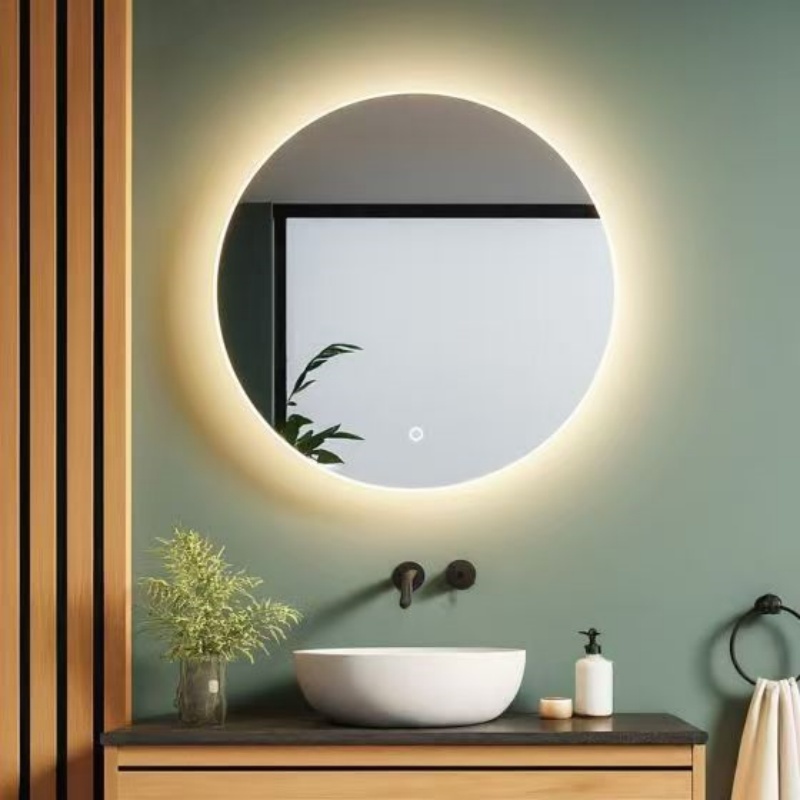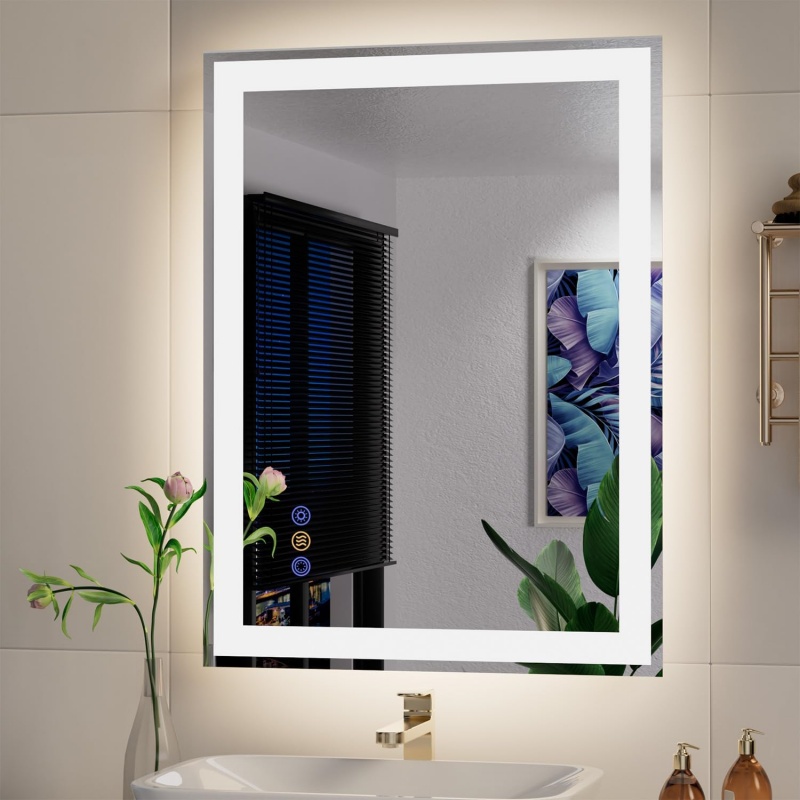In the current era of rapid development in the smart home industry, smart mirrors, as core products integrating decoration, practicality, and technology, are undergoing a revolutionary upgrade in their processing technology. Laser sandblasting machines, with their core advantages of precision, efficiency, and environmental friendliness, are gradually replacing traditional sandblasting and chemical etching processes, becoming the mainstream choice for smart mirror surface treatment and injecting new technological vitality into the industry. I. Technical Principle: Precise Dialogue Between Light and Mirror The core principle of laser sandblasting for smart mirror processing is to use a high-energy-density laser beam as a “processing tool.” Through precise computer program control of the laser’s energy, spot size, scanning speed, and path, the surface of the smart mirror is selectively “bombarded.” The core substrate of smart mirrors is mostly tempered glass, typically coated with a metal film or functional film layer. By adjusting parameters, laser sandblasting machines can achieve two key effects: first, micro-nano-level etching of the glass surface to form textures with varying roughness; second, precise removal of localized film layers while preserving functional areas, enabling partitioned designs for display, touch, and other functions. Unlike traditional physical sandblasting, which relies on abrasive impact, laser sandblasting is a non-contact processing method. The focused laser beam achieves an energy density of 10^6-10^9 W/cm², instantly vaporizing or melting the material on the glass surface without damaging the internal structure of the substrate. Furthermore, combined with a CCD vision positioning system and CAD drawing import functionality, it enables automated replication of complex patterns with an error controlled within ±0.01mm, perfectly matching the stringent precision requirements of smart mirrors. II. Application Advantages: Completely Outperforming Traditional Processes

1.Superior Precision and Flexibility
Traditional sandblasting processes struggle to control etching depth, and complex pattern processing is prone to issues such as blurred edges and dimensional deviations. Laser sandblasting, however, allows for precise control from micron-level shallow etching to millimeter-level deep engraving through parameter fine-tuning. Whether it’s delicate texture decoration or precise zoning of touch areas, it can be perfectly presented. Moreover, no molds are needed; patterns can be switched simply by modifying the computer program, greatly improving the efficiency of small-batch customization and rapid iteration, meeting the diverse design needs of the smart home market.
2.Significant Cost Reduction and Efficiency Improvement: Traditional processes require multiple steps such as lamination, exposure, development, etching, and film removal, which are not only cumbersome and labor-intensive but also result in significant material waste. Laser sandblasting machines can achieve one-time forming, eliminating mold making and multiple intermediate processes, increasing processing efficiency by 3-5 times, and raising material utilization from around 70% in traditional processes to over 95%. Data from a smart home company shows that after adopting laser sandblasting, the unit processing cost of smart mirrors decreased by 25%, the order delivery cycle was shortened by 40%, and market competitiveness was significantly enhanced.
3.Balancing Quality and Environmental Protection: Laser-processed smart mirrors have uniform surface texture, smooth edges, and are free of burrs, scratches, and other defects. The transition between etched and non-etched areas is also natural, improving the product’s texture and durability. Meanwhile, the processing involves no abrasive consumption and no chemical waste discharge, producing only a small amount of gaseous substances. After treatment by the supporting purification equipment, these substances can meet emission standards, completely solving the environmental pollution problems caused by traditional chemical etching and aligning with the national “dual carbon” policy and the industry’s green development trend.

4.Functionality and Aesthetics in Harmony Laser sandblasting can create various visual effects on the surface of smart mirrors, such as frosted surfaces, stripes, and grids. This enhances the product’s decorative appeal and reduces glare through texture design, optimizing the display effect. For example, in bathroom smart mirrors, localized laser sandblasting creates anti-fog areas, balancing practicality and aesthetics; in living room smart mirrors, gradient etching textures create a high-end technological feel, making the smart mirror a “visual highlight” of the home. III. Processing Flow: Standardized Precision Manufacturing The laser sandblasting machine’s processing flow for smart mirrors is highly standardized, mainly consisting of four steps: First, raw material pretreatment involves cleaning the cut tempered glass substrate to remove surface oil, dust, and other impurities, ensuring processing precision. Second, parameter setting and programming: based on the smart mirror’s design drawings, parameters such as laser power, scanning speed, and etching depth are input into the control system, and the pattern is imported and a processing path is generated using CAD software. Third, automated processing: the pretreated substrate is fixed on the worktable, and after the equipment is started, the laser head scans and processes according to the preset path. The CCD vision system provides real-time positioning and calibration to ensure accurate pattern replication. Finally, post-processing involves cleaning, drying, and quality inspection of the processed smart mirrors, rejecting defective products to ensure that every product meets quality standards. The entire process is fully automated, allowing a single person to operate multiple machines simultaneously, significantly reducing errors caused by human intervention and achieving a balance between large-scale production and precision processing.
5.Industry Prospects: A Vast Blue Ocean Amidst the Smart Home Wave
With the continuous expansion of the smart home market, the application scenarios of smart mirrors are constantly expanding, extending from bathroom mirrors and dressing mirrors to fitness mirrors, makeup mirrors, office mirrors, and other fields. The global smart mirror market size exceeded US$10 billion in 2023 and is projected to reach US$23 billion by 2028. Laser sandblasting machines, as core processing equipment, will directly benefit from this growth trend.
In the future, laser sandblasting machines will develop towards higher precision, faster speed, and greater intelligence. For example, combining AI visual recognition technology to achieve automatic defect detection and compensation, and developing ultrafast laser equipment to further improve processing efficiency and surface quality. Simultaneously, with the emergence of new products such as flexible smart mirrors and transparent display smart mirrors, laser sandblasting technology will continuously break through application boundaries, providing stronger technical support for the innovative development of the smart mirror industry.
Driven by increasingly stringent environmental policies and continuously upgrading consumer demand, laser sandblasting machines, with their technological advantages, will completely replace traditional processing processes, becoming standard equipment in smart mirror production, and propelling the industry into a new stage of high-quality, high-value-added development.



